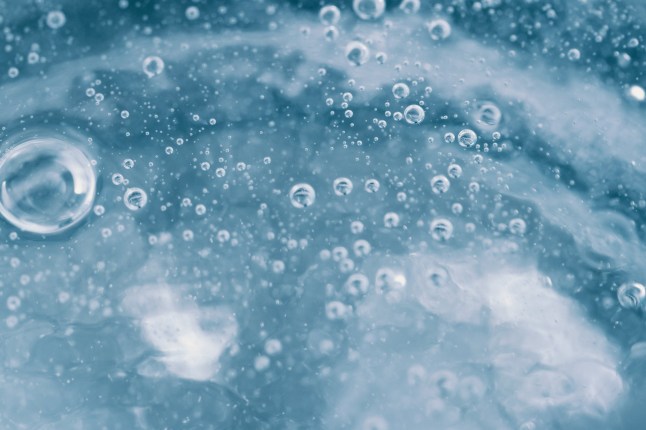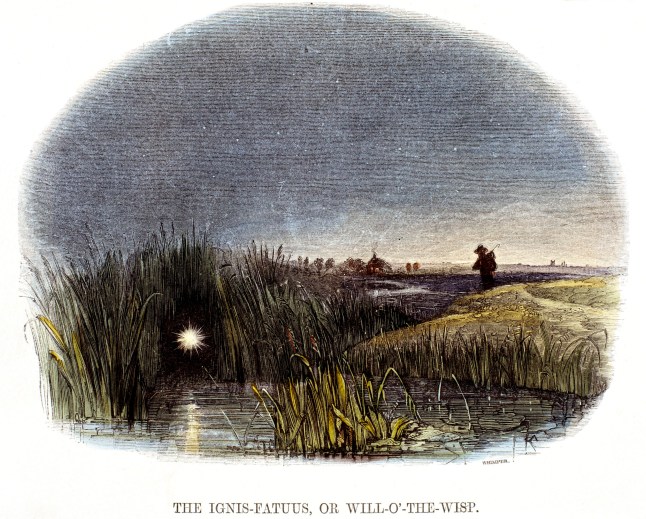Water is famously the go-to for putting out fires,but now scientists think they’ve shown how it could potentially spark one too.
They were researching what could cause the phenomen of ‘will-o’-the-wisp’ in marshland,the spooky lights thought to be spirits or ghosts in folklore,which lure walkers to their deaths.
A mechanism behind ignis fatuus has been debated for a while. The most common theory is that it is due to methane gas from rotting plants in the boggy ecosystem which somehow catches light,but exactly how that happened has not been clear.
Now,a new paper theorises that it could be due to ‘microlightning’ within bubbles in the murky water.
This is proposed to happen when bubbles of methane and air within the water interact. As the bubbles rise towards the surface,some may become positively and some negatively charged.

A 1911 illustration of a will-o’-the-wisp luring men into danger over a marsh (Picture: Kharbine-Tapabor/Shutterstock)
If oppositely charged bubbles then merge,this could be enough to create a sufficient spark to ignite methane gas,which burns with a blue flame.
Study author Richard Zare told New Scientist: ‘We continue to discover things about water that,once you understand them,they’re obvious,but before then,they seem completely bizarre.
‘No one thinks of water related to fire. They think water puts out fire. They’re not telling you with water,I can get a spark and set something on fire. This is new.’
Now,obviously we’re not saying you need to worry about setting your house on fire by washing the dishes.
For the most part,water is still the go to for fire fighting (except if it’s an electrical fire: don’t tip it on a burning hairdryer.)
But in very specific cases,the researchers say it may have this surprising ability.

Blame it on the bubbles (Picture: Getty)
Professor Zare,of Stanford University,had already seen tiny droplets of water creating sparks after building up charge,so wanted to build on this by looking at whether something similar might explain the will-o-the-wisp idea.
They used an underwater nozzle to direct microbubbles of methane mixed with air,using a sensitive camera,as well as a photon counter and spectrometer,to record when the bubbles collided.
The study says: ‘Under dense bubbling conditions,brief,localised flashes were observed between adjacent bubbles.’

An engraving by Josiah Wood Whymper from ‘Phenomena of Nature’,published in London in 1849 (Picture: Getty)
They added that this ‘offers a natural ignition mechanism for methane oxidation under ambient conditions. This discovery supports a long-suspected link between electrified interfaces and spontaneous cool flames’.
Exactly what causes will-o-the-wisp is still a mystery,not least because they seem to appear much less often now than accounts in folklore would suggest they did previously.
Other mechanisms have also been put forward,such as bioluminisence or interaction with phosphine produced by bacteria.
Or then again,it might just have been ghosts all along.
United News - unews.co.za